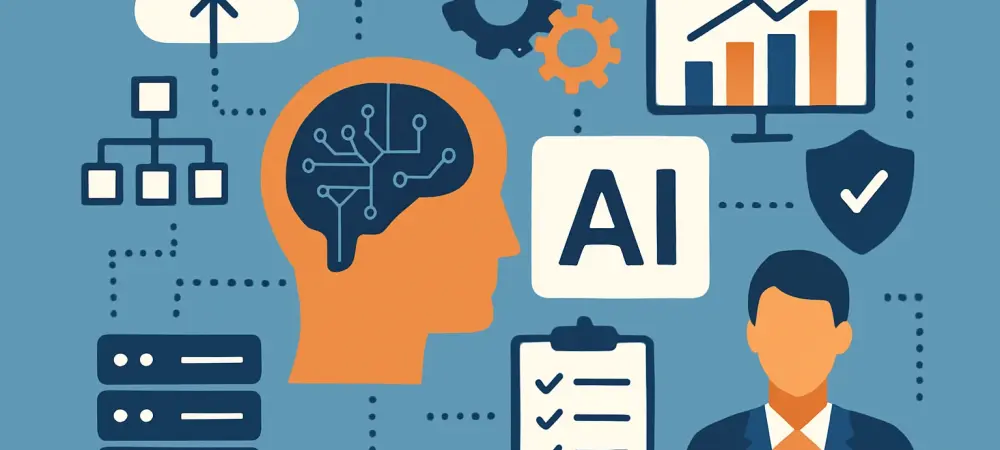Introduction to AI Readiness in Global Enterprises
Imagine a world where nearly every major corporation harnesses artificial intelligence to streamline operations, yet only a tiny fraction— a staggering 2%—truly masters its potential, highlighting a significant disparity in the rapid rise of AI in business. This technology is poised to redefine efficiency, innovation, and competitive advantage in today’s tech-driven landscape, making AI readiness not just a luxury but a critical necessity for enterprises aiming to stay ahead. This analysis delves into the current state of AI adoption across global organizations, explores real-world applications, incorporates expert insights, speculates on future implications, and offers actionable takeaways for bridging the readiness gap.
Current State of AI Adoption in Enterprises
AI Adoption Trends and Statistics
The landscape of AI adoption reveals a near-universal embrace, with almost every surveyed organization—comprising 650 IT leaders and 150 AI strategists from companies generating over $200 million in revenue—integrating AI into their operations. However, a mere 2% achieve high readiness, while 77% linger at moderate levels and 21% remain at low readiness. This gap underscores a profound challenge: widespread interest does not translate into scalable deployment for most.
A significant trend shaping this scenario is the shift toward hybrid IT environments, with 94% of organizations operating across multiple platforms like public cloud, on-premises systems, and edge computing. This complex setup often hinders consistent AI implementation. Additionally, over 90% of enterprises have developed strategies for observability tools, reflecting a growing focus on data management as a foundation for AI scalability.
Data maturity is also progressing, with 38% of firms consolidating information into data lakes and 95% standardizing around tools like OpenTelemetry. These advancements signal an ongoing effort to build robust infrastructures, though the journey from experimentation to full integration remains steep for the majority of businesses.
Real-World Applications and Case Studies
Enterprises at varying readiness levels demonstrate distinct approaches to AI application. Those at moderate readiness often limit AI to isolated pilots, testing use cases in specific departments without enterprise-wide impact. In contrast, the elite 2% with high readiness seamlessly integrate AI across operations, leveraging it for transformative outcomes.
Specific applications highlight AI’s versatility, with 71% of firms employing it for cybersecurity to detect and mitigate threats. Another 73% target application performance optimization, though challenges like hybrid cloud complexities and API sprawl—a pain point for 58%—often impede progress. These hurdles illustrate the operational friction many face when scaling AI solutions.
High-readiness organizations offer valuable lessons through their standout practices, such as establishing robust governance and standardized processes. These benchmarks show that overcoming barriers like inconsistent security in hybrid setups is possible, providing a roadmap for others striving to elevate their AI capabilities.
Expert Insights on AI Readiness Challenges and Opportunities
Industry perspectives underscore the transformative potential of AI, with 99% of IT leaders expressing confidence in using AI for automating IT functions through AIOps. Yet, barriers such as talent shortages and security gaps persistently stall progress. Many firms lack the skilled personnel needed to drive implementation, revealing a critical bottleneck in the adoption journey.
Security and governance concerns further complicate the landscape, particularly for the 77% at moderate readiness, where only 18% have AI-specific security measures in place. Experts emphasize the urgency of consistent policies, especially in hybrid environments where vulnerabilities can multiply. This gap highlights a pressing need for frameworks that address risks tied to diverse AI models and setups.
Thought leaders also point to solutions like the AI Readiness Index, a tool designed to assess operational maturity and guide scalable deployment. Such frameworks offer a structured approach to overcoming obstacles, helping enterprises align their strategies with long-term goals while addressing immediate security and governance shortcomings.
Future Implications of AI Readiness in Global Enterprises
Looking ahead, the trajectory of AI integration suggests a gradual move toward enterprise-wide strategies as data maturity continues to improve. With 38% of organizations already utilizing data lakes and widespread adoption of standardized observability tools, the foundation for broader AI application is strengthening. This evolution promises enhanced automation and innovation across sectors.
However, challenges like persistent talent gaps and operational complexities remain on the horizon. A notable 60% of enterprises still depend on manual processes, slowing the pace of AI-driven transformation. Addressing these inefficiencies will be crucial to unlocking the full spectrum of benefits that AI offers in competitive markets.
The broader implications span industries, with risks of uneven security in hybrid setups posing ongoing threats. Simultaneously, opportunities emerge for IT professionals to reskill for AI-centric roles, positioning themselves as vital assets. Balancing these risks and prospects will shape how enterprises navigate the next phase of technological advancement.
Conclusion and Path Forward for AI Readiness
Reflecting on the landscape of AI readiness, the disparity between widespread interest and actual preparedness stands out, with only 2% of enterprises achieving high readiness while critical barriers like governance and security persist. The reliance on hybrid IT environments and the adoption of observability tools mark significant strides, yet complexities often overshadow progress. Moving forward, enterprises are encouraged to adopt tools like the AI Readiness Index to systematically evaluate and enhance their capabilities. Investing in talent development emerges as a pivotal step, alongside streamlining processes to reduce operational friction. By prioritizing these actions, businesses can position themselves to close the readiness gap and harness AI’s transformative power in an increasingly competitive era.

